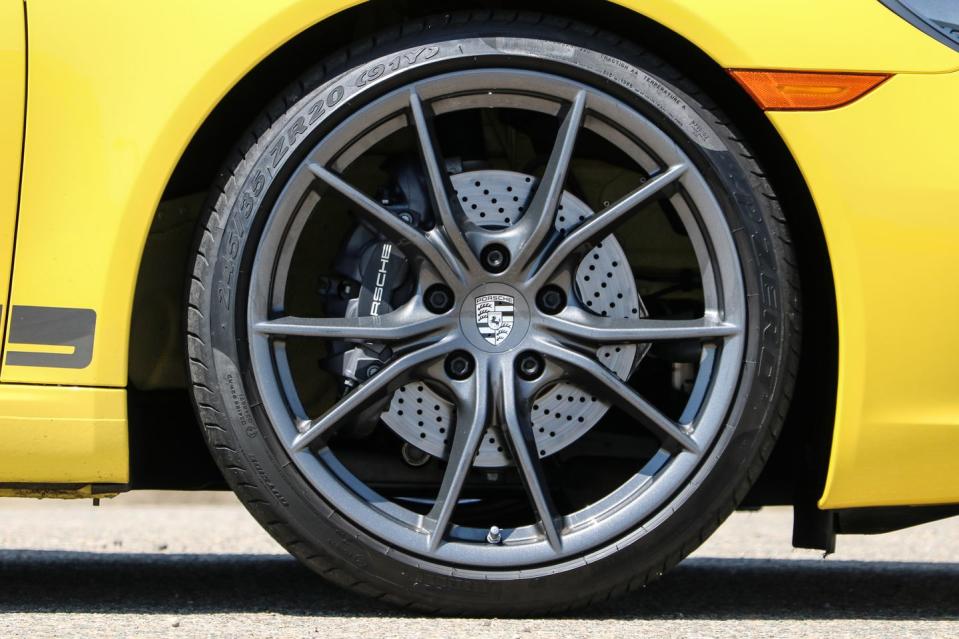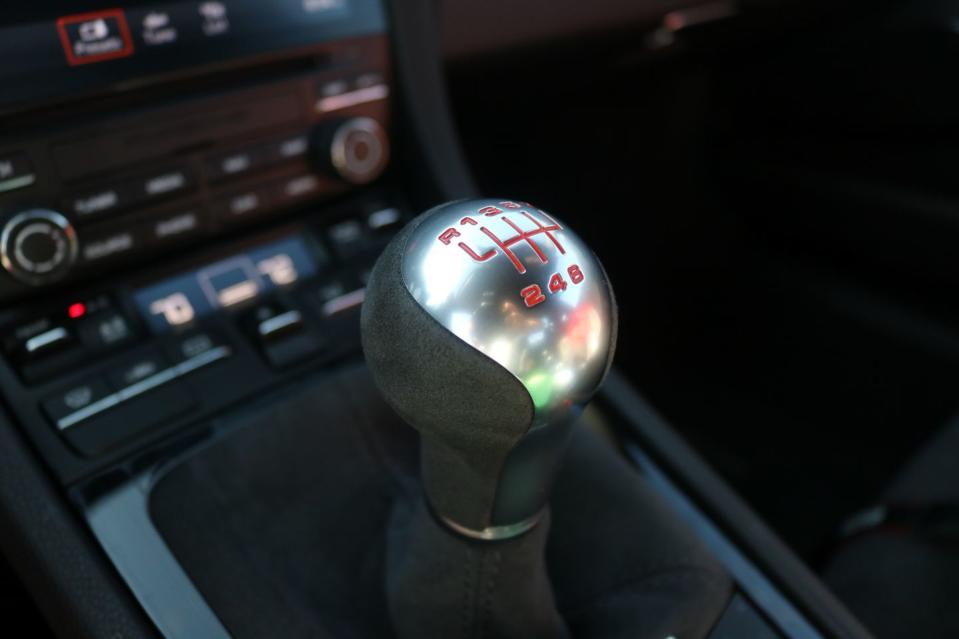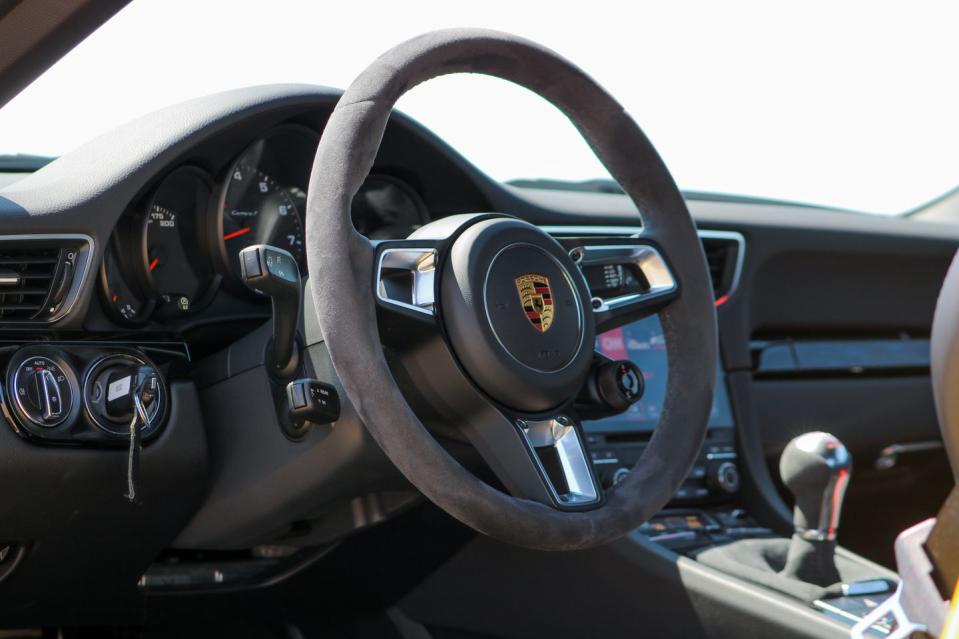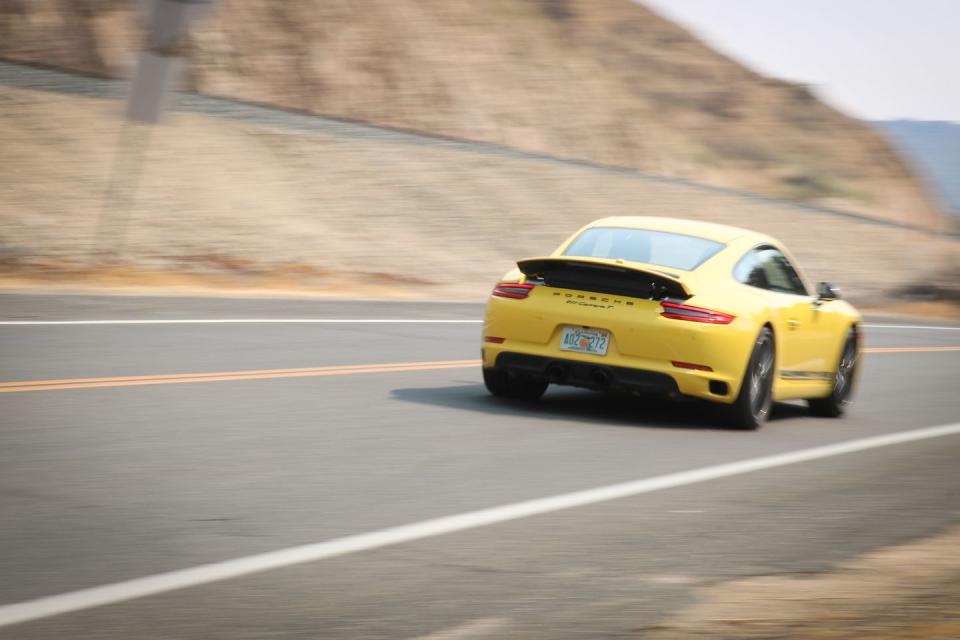The 2018 Porsche 911 Carrera T Is Purist Perfection
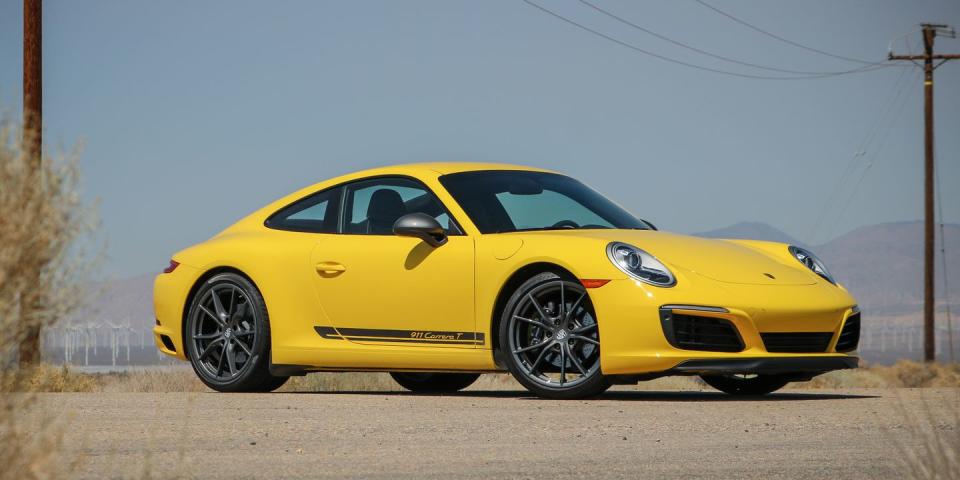
Think Porsche builds only pricey special variants of its core 911 Carrera lineup? Sure, the GTS and the Turbo, as well as track specials such as the GT3, cost an arm and a leg. When base 911s are just under $100K to start, the hotter stuff is naturally going to cost more. But the 2018 Carrera T is the rare 911 special that stands apart from everyday Carrera and Carrera S models and yet doesn't cost a fortune.
The T nestles between the 370-hp Carrera and the 420-hp Carrera S in the basement of the 911 lineup. It uses the former's 370-hp twin-turbocharged flat-six yet takes on the adaptive suspension (PASM Sport in Porsche-speak) from the Carrera GTS, a Sport Exhaust system with black exhaust tips, a shorter 3.59:1 final-drive ratio, a limited-slip rear differential (on versions equipped with the seven-speed manual transmission), and a "lightweight" version of the 911's Sport Chrono package that keeps the dynamic engine mounts and steering-wheel-mounted driving-mode selector but goes without the usual dashtop gauge (although that can be added back in for $320).
Lightweight Measures
A set of rocker-panel stripes and side mirrors finished in Agate Grey and 20-inch Carrera S wheels painted Titanium Grey complete the look, while lightweight glass aft of the B-pillar, nylon pull straps instead of internal door handles, and the stripping of some sound insulation shed a claimed 11 pounds from the basic Carrera's curb weight.
Porsche says this is the lightest factory 911 variant you can buy. For those of you really serious about weight savings, the company offers fixed-back bucket seats for $5200 that can only slide (manually) fore and aft and require that the rear seats be deleted, too, elevating the T's overall weight savings to a claimed 44 pounds. The T is the first non-GT 911 available with these hard-core chairs, which are as intense as any seat offered on a street-legal automobile in the United States. Surprisingly, the buckets are tolerable not just for short trips but long hauls as well, although they make even reaching for a briefcase tossed in back a contortionist affair. The sum of the T's upgrades and mass reductions is a base 911 that is packed with the go-fast items you want and none of the non-speed-related extras you don't, with additional rawness sprinkled over the driving experience for good measure thanks to the thinner glass and missing sound-deadening material.
As with most of Porsche's lightweight specials, the Carrera T's reductive feature count results in additive pricing-but not outrageously so. At $103,150, it falls just $3000 shy of the Carrera S, which comes with 50 more horsepower, more than enough to offset the T's lighter curb weight. We couldn't care less. There is undeniable novelty in a base 911 made, well, base-er and packing must-have performance options.
We tested two Carrera Ts, one with the standard seven-speed manual transmission and another with Porsche's seven-speed PDK dual-clutch automatic. The former model came with a microsuede-wrapped steering wheel and shift knob ($910) and the aforementioned lightweight bucket seats ($5200). Both cars were equipped with Porsche's optional rear-wheel steering ($2090). Adding the PDK costs $3730, and the T so equipped also came with $700 heated front seats. Other than their transmissions and minutely differing interior trim, the major difference between the two cars was their paint colors. The manual-transmission car was Racing Yellow, the PDK-equipped model Guards Red. Besides the ketchup-and-mustard colors, Porsche also offers Lava Orange, Miami Blue, GT Silver, Carrara White, Jet Black, and gloss white or black. Cloth seating surfaces are standard, and for a little extra money, you can have contrasting-color stitching in red, yellow, or silver, with the seatbelts and fabric door pulls in the same hue.
Performance: Objective and Subjective
In keeping with the T's heritage-it stands for Touring and was first applied to the 1968 911T to denote it as the lightest factory 911-both Carrera Ts are the lightest regular-grade current-generation 911s we've tested, if only just. The manual-transmission car weighed 3221 pounds, eight pounds shy of a 2017 911 Carrera manual; at 3290 pounds, the PDK-equipped car was only 13 pounds lighter than a 2017 911 Carrera PDK we tested previously. The two cars' performance, similarly, shades their non-T counterparts. The PDK is the quicker of the two, hitting 60 mph in 3.5 seconds, or 0.1 second behind the Carrera PDK. Color us surprised by the Carrera T manual, whose 3.7-second run to 60 mph represents a 0.3-second improvement over the manual-transmission 2017 Carrera. Otherwise, generating 1.05 to 1.06 g of lateral grip on the skidpad along with 142- and 144-foot stopping distances from 70 mph covers territory trod by other Carreras. It's pretty rarified territory but not new-to-the-911 territory.
Absent detectable seat-of-the-pants performance gains, what is the Carrera T buyer left with? Well, with less sound attenuation under their seats and thinner window glass behind them, those drivers are subject to a steady harmony of tire sizzle and slap and suspension thumping. The speedometer doubles as a volume readout, in that the faster you go, the more racket makes its way through the Carrera T's thinner shell. Road imperfections passing beneath the tires announce themselves as forcefully by feel as they do aurally, owing to the PASM Sport's stiffer tune relative to the regular Carrera's.
In any other car, these changes would be categorized as having worsened the underlying vehicle. Here, it's the whole point. In removing some of the 911's veneer of refinement, Porsche has managed to bring some of the GT3's rawness into the entry-level Carrera. This GT-car rub-off gives the Carrera T's driver a more vivid connection with the car, the controls seemingly twitching with greater feedback than the 911's talkative baseline. It's like when your arm falls asleep and is tingling back awake as the blood flow returns and its nerve endings spark back to attention-the sensations are fresh, although in your head you know it's the same sweet-driving 911.
It's Not for Everyone
If you think you might get hung up on the Carrera T's sharper edge or its-gulp-cloth seats, you're missing the point. This car is for those who hunger for more granular road feel and the chance to zing a Porsche flat-six to redline for the pops and burbles on overrun that pierce the cabin. For them, seats wrapped in cloth can be justified any number of ways: It's grippier than leather, cloth isn't widely available as an upholstery choice in the 911 lineup, maybe it weighs less than cowhide. Who cares? It's different, and it highlights the T's low-frills, low-weight reason for existence.
The experience-over-substance approach works best when paired with the manual transmission. The shortened shift lever is a pleasure to muscle through the gears, its action notchy and stiff. Even though the clutch pedal requires more than a little quadricep strength, the reward is, well, full-body engagement. The workout you'll get when traffic snarls to a stop-and-go morass suits the Carrera T's hard-way-on-purpose personality. This isn't to say the PDK isn't as excellent here as it is in every other Porsche sports-car application. It just comes across as lazy. Besides, you'll want the distraction of selecting your own gears when your ears and buns are being assaulted by all that road and exhaust noise, the brutal ride, and those optional fixed-back bucket seats.
By stripping the 911 to its core, Porsche has tapped into the same illogical primacy that drove its customers to rebellion when the latest 911 GT3 briefly lost its manual-transmission option. The PDK transmission is a better track-day tool, shifting more crisply and delivering quicker acceleration than a human working a shift lever and a third pedal ever could. But for many Porsche customers, the experience, no matter its effect on outright performance, matters more. The Carrera T answers that call, with an exclusive feature mix and even in the degradation of its ride comfort and refinement. In spite of the manual T's shorter final-drive ratio and lighter weight, it comes with no real performance gain that can be detected without a stopwatch. Yet by some miracle, this special-edition 911 also comes without a crazy-high price. That makes
('You Might Also Like',)

 Yahoo Autos
Yahoo Autos 